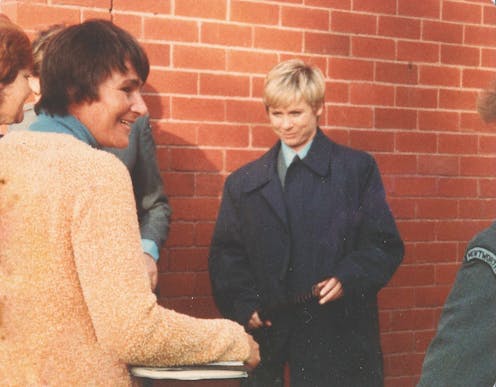Sandra Willson's memoir of incarceration is a tale of working-class resilience
- Written by Sarah Attfield, Senior Lecturer, Communications, University of Technology Sydney

Why do authors pen memoirs? What impact can memoirs have? Patti Miller, an expert on writing “true life”, says authors should ask why their memoir should be written.
Miller believes there are good reasons to write a memoir – maybe the author has a particular wisdom to impart or wants to assert a sense of identity. The memoir might be a healing document, or it could be filling a gap in social and cultural history. It might be even be written as revenge (although Miller cautions against this). But ultimately, the memoir holds the possibility of enlightening the reader.
Review: Between Me and Myself: A Memoir of Murder, Desire and the Struggle to be Free by Sandra Willson, edited by Rebecca Jennings (Text Publishing)
All of Miller’s categories for memoir/autobiography come into play in Sandra Willson’s Between Me and Myself. After killing taxi driver Rodney Woodgate in 1959, in an act she says was revenge against a society that forbade her relationship with a woman, Sandra became New South Wales’s longest-serving woman prisoner. She was detained for 18 years in psychiatric hospitals and prisons before her release in 1977.
Read more: Women in prison: histories of trauma and abuse highlight the need for specialised care
A searing indictment
This book offers heartbreaking detail of trauma, abuse and neglect, and a searing indictment of Australian society and its institutions.



















